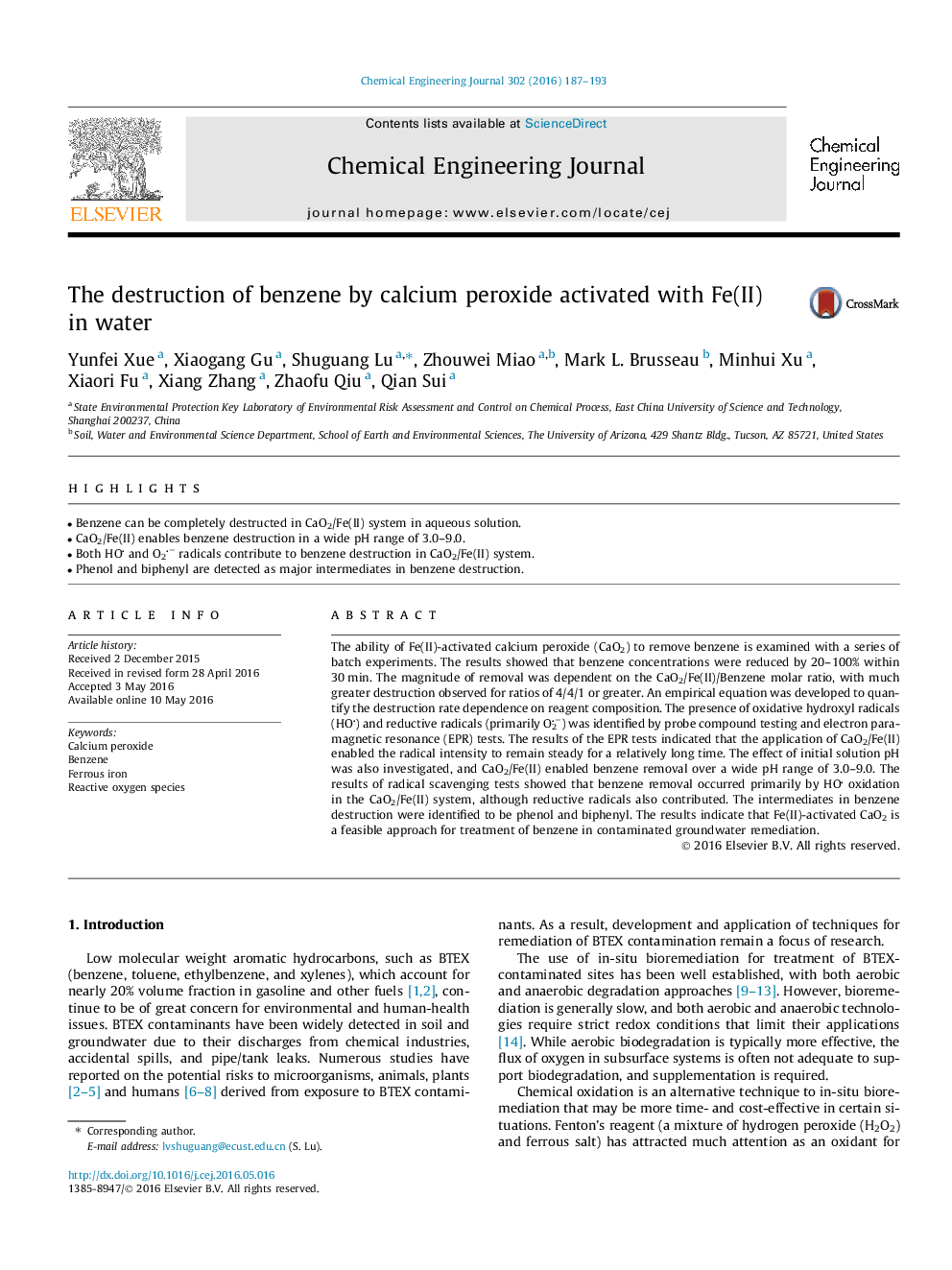| Article ID | Journal | Published Year | Pages | File Type |
|---|---|---|---|---|
| 145309 | Chemical Engineering Journal | 2016 | 7 Pages |
•Benzene can be completely destructed in CaO2/Fe(II) system in aqueous solution.•CaO2/Fe(II) enables benzene destruction in a wide pH range of 3.0–9.0.•Both HO and O2− radicals contribute to benzene destruction in CaO2/Fe(II) system.•Phenol and biphenyl are detected as major intermediates in benzene destruction.
The ability of Fe(II)-activated calcium peroxide (CaO2) to remove benzene is examined with a series of batch experiments. The results showed that benzene concentrations were reduced by 20–100% within 30 min. The magnitude of removal was dependent on the CaO2/Fe(II)/Benzene molar ratio, with much greater destruction observed for ratios of 4/4/1 or greater. An empirical equation was developed to quantify the destruction rate dependence on reagent composition. The presence of oxidative hydroxyl radicals (HO) and reductive radicals (primarily O2−) was identified by probe compound testing and electron paramagnetic resonance (EPR) tests. The results of the EPR tests indicated that the application of CaO2/Fe(II) enabled the radical intensity to remain steady for a relatively long time. The effect of initial solution pH was also investigated, and CaO2/Fe(II) enabled benzene removal over a wide pH range of 3.0–9.0. The results of radical scavenging tests showed that benzene removal occurred primarily by HO oxidation in the CaO2/Fe(II) system, although reductive radicals also contributed. The intermediates in benzene destruction were identified to be phenol and biphenyl. The results indicate that Fe(II)-activated CaO2 is a feasible approach for treatment of benzene in contaminated groundwater remediation.
